Walk into any climbing shop and you’ll be presented with a wide array of carabiners, loads of sizes, loads of shapes, loads of colours and a range of prices.
What ever carabiner you choose to buy please make sure that it is a type that is rated for climbing/caving and that it is suitable for job you will be asking it to do. A carabiner suitable for climbing will have its strength rating forged, stamped or etched on it. It should also conform to the 0120CE standard, this again should be present on the carabiner.

There are some really super light carabiners available out there that are great for climbing but could be too easily damaged/compromised whilst on the river. In instances where hauling, belaying or security are required locking carabiners are best. I carry four locking carabiners as part of my kit, but also have a couple of non-locking carabiners in my boat for clipping gear into that can be called into service if required.
The number you should carry is subjective – Mountainbuzz, Pin Kit.
For the record I am using a combination of DMM and Wild Country carabiners. Both are widely available, both companies are UK based and both have great customer service setups. In the case of DMM you can also pick up cosmetics seconds from V12.

Shape
Oval Carabiners
Oval carabiners are versatile bits of kit and are still really popular in caving and aid climbing. In the past these carabiners have often been seen as weaker and heavier than D-shaped carabiners. The developments in carabiner technology over the last decade or so has meant that oval carabiners are starting to make a come back in both locking and non-locking varieties.
D-Shaped Carabiners
The vast majority of carabiners on the market are D-Shaped and asymmetrical. Asymmetrical carabiners are wider at the top than they are at the bottom and offer a wider gate opening than symmetrical versions.
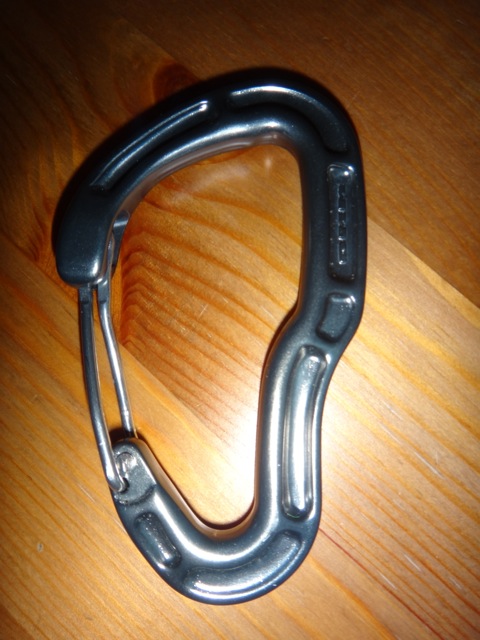
Gate Type
Non-Locking
Non-locking carabiners have no mechanical device to prevent the gate from opening accidentally. They can be solid, wire, curved or straight.
Solid
Its’s getting difficult to find solid gate carabiners in some climbing shops. Solid gates tend to be of an older design are slowly being phased out in favour of wire gates. As well as being heavier than a comparable wire gate carabiner the solid gate carabiner also has an inherent flaw. On rapid loading the gate vibrates and can under the right circumstances open/close (aka “gate lash”). Clearly this can be an issue and is the main reason why locking gate carabiners are the preferred choice for heavy/security applications.
Straight
This is the most common gate type.
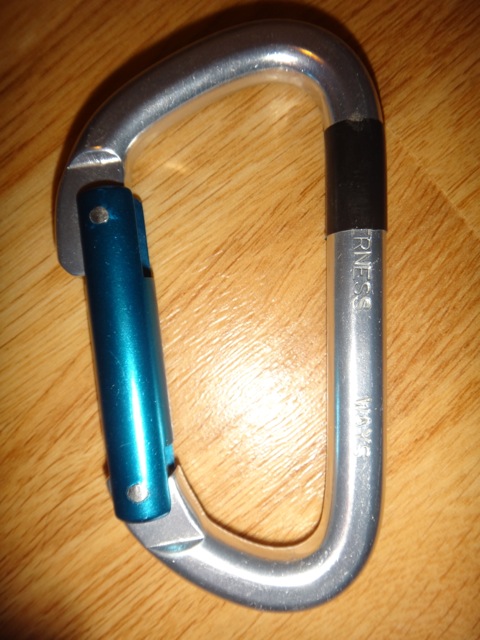
Bent
A bent gate carabiner has a concave curve. It provides a wider opening and makes clipping easier. Some climbers believe that it is easier to accidentally open a bent gate carabiner compared to a straight gate carabiner.

Locking
Unlike non-locking carabiners, a carabiner with a locking mechanism prevents the gate from accidentally opening. The user winds the screw mechanism to a position that prevents the gate from opening. Carabiners of this type are one of the core components of any pin kit.
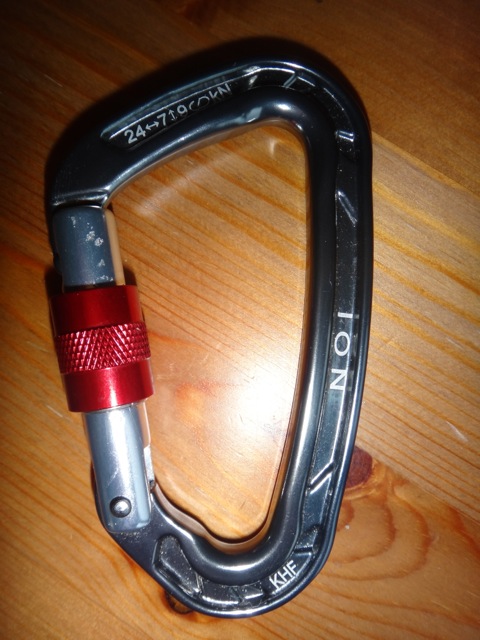
It is essential that the screw gate mechanism is cleaned and kept free from dirt/grit which might otherwise prevent the system from working as it should.
Wire
Wire gate carabiners as the name suggests have a gate made from a single piece of wire rod. The thinness of the wire means that the opening is wider and therefore easier to clip in. The smaller mass also means that the vibration problems in a solid gate carabiner are no longer apparent.
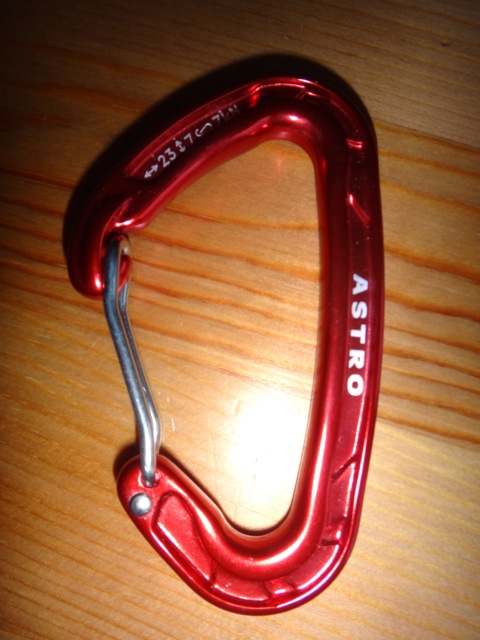
Nose Notch
The nose notch is the spot where the gate closes against the carabiner body. Some designs have a small hook or notch at the closure.
The keylock or notchless nose design is smoother and less prone to snagging when clipping or unclipping webbing, gear, or ropes. All of my locking carabiners have keylock noses.
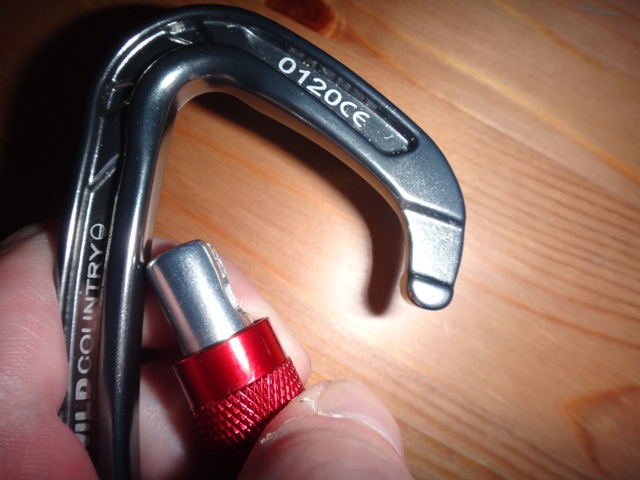
Update:
Over the last year of so I have been putting a number of bits of kits through their paces on the water and on the crag. The following are now part of my basic kit.



Can you recommend specific models of carabiner with the key lock nose design? Whenever I look online it never seems to be specified what type the carabiner has, and there are often no photos of it opened so I can see. Most of the Palm ones are notched, which surprises me.
DMM Sentinel Screwgate – http://amzn.to/15eBIUw
DMM Shield wire gate – http://amzn.to/15eC65C this is for 2 x crabs as part of a runner set.
DMM Shadow – http://amzn.to/W8oPLN
Wild Country ION Screwgate – http://amzn.to/W8odpc
Wild Country Titan Screwgate – http://amzn.to/15eCpxj
I’d recommend DMM Boa on quick lock (red gate), right nose, wide shape for grab handles and pretty solid.
I wouldn’t bother with Key Lock Noes design. Usually not worth the expense when using them for W/W kayaking. Main points to look for a locking and Big D Shaped (HMS) carabiners. I would avoid triple/auto lock carabiners as they tend to seize up with grit/corrosion etc. Cheap the better but always buy new. Carabiners in water tend corrode much quicker.
Also, one more thing. The first picture with a oval carabiner and a spectra/dyneema sling is a good example of what not to get, make sure to buy nice wide 16mm width nylon sling (in a bright colour if poss). It’ll last way longer, handle abrasions better and make a comfier harness.
Peace 🙂
I’ve had the best luck with the Mammut lockers. The action stays nice and it doesn’t rust compared to my other Black Diamond Positron lockers.